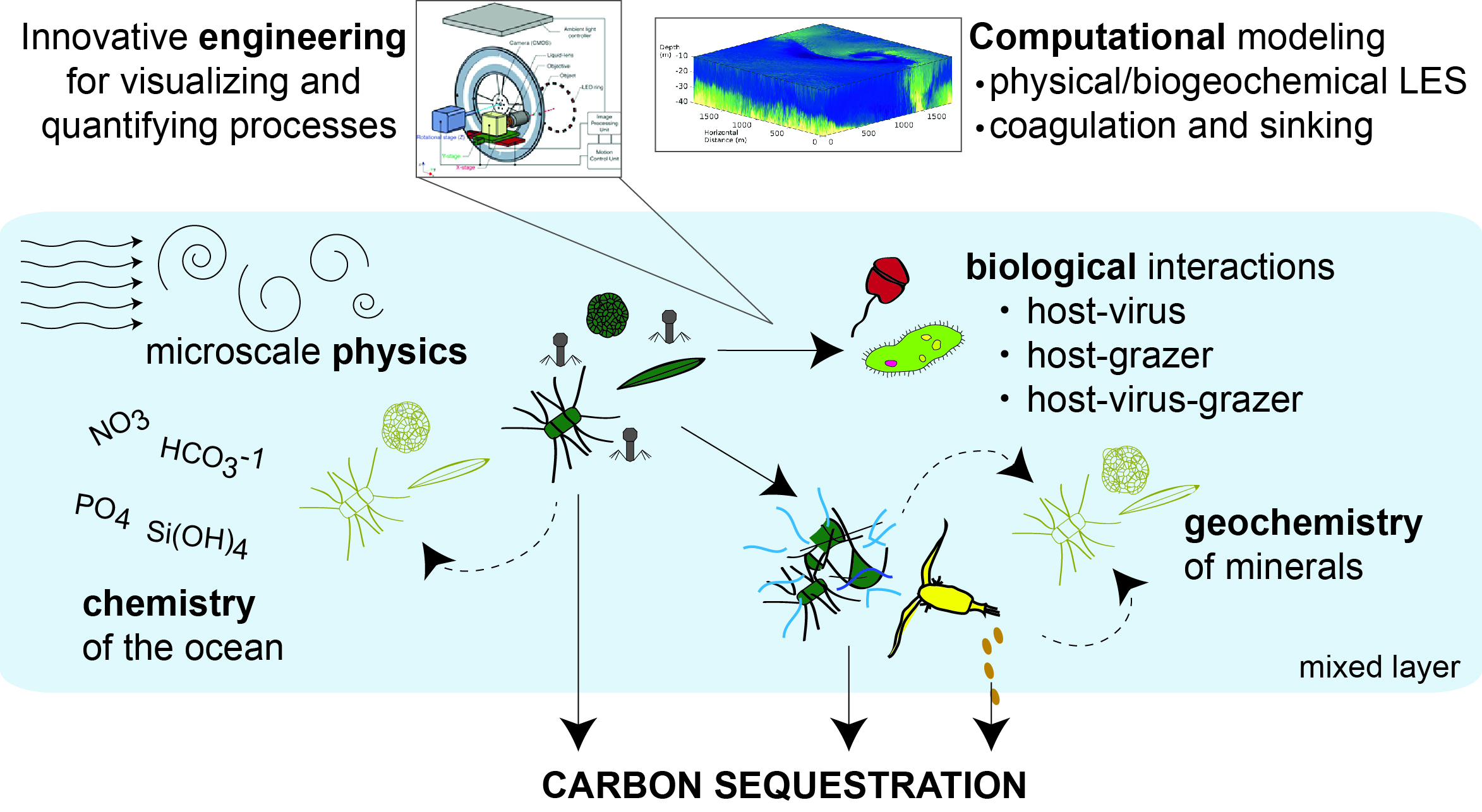The Convergent Impact of Marine Viruses, Minerals, and Microscale Physics on Phytoplankton Carbon Sequestration
Sinking, aggregated particles of ballasted, marine phytoplankton export carbon from the surface to the deep-ocean and play a key role in the oceanic biological pump. Decades of research have provided insight into carbon flow through the ocean, but immense spatial and temporal variability in productivity and export efficiency remain unexplained. Filling these ‘gaps’ in the global carbon budget is predicated on a holistic approach that incorporates novel conceptual thinking and coordinated analytical measurements from distinct fields that have been traditionally studied in isolation. Proposed research converges biology, chemistry, physics, engineering, mathematics, and computational modeling at the intersection of two paradigms that describe how ecosystem interactions regulate the flow of carbon in the ocean. The ‘ballast hypothesis’ states that the sinking flux of particulate organic matter (POC) is dominated by phytoplankton-derived particles containing ballast minerals (coccolithophores containing calcium carbonate and diatoms containing biogenic silica), which mechanistically increase particle density and sinking velocity. The ‘virus shunt hypothesis’ states that infection and lysis of phytoplankton releases cellular debris and dissolved organic carbon, simultaneously decreasing the mass and velocity of particles sinking to depth and enhancing upper ocean respiration. Based on our extensive previous lab- and field- based findings, we posit that there are several, overlooked, ecosystem linkages and microscale physical regimes by which viral infection increases POC sinking flux and carbon sequestration to depth. These include enhanced particle aggregation, increased ballast production, formation of spores (diatoms), and enhanced production of ballasted fecal pellets by zooplankton grazers. We suggest that these dynamic and coupled phytoplankton-pathogen-particle-predator linkages, which were traditionally thought to be independent and competing, coalesce in certain chemical and physical regimes to facilitate export flux and explain the high variability of POC export efficiency.
Our work fills an urgent need to elucidate and quantify the linkages between viruses and ballast minerals, fundamentally altering our understanding of carbon cycling and the impact of viruses within it. Proposed research couples laboratory-based experiments on model host-virus-grazer systems with extensive field- based observational and manipulative studies on natural populations of diatoms and coccolithophores, the two phytoplankton groups that collectively account for ~98% of the estimated POC flux to the deep ocean. Experiments and measurements integrate diagnostic biological and chemical controls on infection and particle coagulation theory with microscale physics and grazing to quantify links to each hypothesized export mechanism under field-relevant turbulent conditions. Cutting-edge engineering and analytical tools will be used to diagnose and track infection dynamics while characterizing and quantifying particle aggregation and disaggregation, mineral dissolution, sinking dynamics, grazing rates, and fecal pellet production at unprecedented resolution and under well-defined, microscale physical regimes. Field campaigns will elucidate the relative efficiency of hypothesized mechanisms in stimulating POC export in natural blooms while providing bulk and size-resolved estimates of POC flux.

